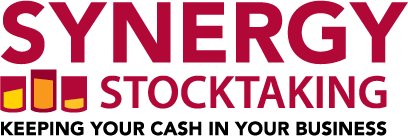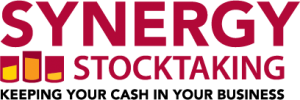POS Systems Can Help You Take Stock and Take Control
Mar 17 2017
Holding too much stock also carries costs; restaurants and hotels should aim to run lean stock to save money. By leveraging the inventory control module in their POS system, venues should be able to get a current, reliable view of existing stock and track the whereabouts of any missing items.
POS based stock control systems can help automate a wide range of inventory management actions throughout the venue. Listed below are 10 operational areas where these inventory management tools can help restaurants or hotels get serious about stock control:
1. Stock items
Every stock item is categorized into categories and sub-categories. Detailed track of stock can be kept including product names, codes, descriptions, categories, sub-categories, quantities, re-order levels, cost prices, currencies, whole sale prices, export retail prices and profit margins. Item prices can be set or modified, and changes to the prices are reflected immediately in all recipes and menu costs.
2. Recipes
Recipe creation can be in minutes not hours, created from the stock item list. Required ingredients can be searched and selected from the list. The optimum selling price on every menu item can be determined by setting the desired gross profit percentage. The knock on effect of price changes on menu items can be calculated to see how they impact on overall food costs.
Catering, buffets or banquet menus suddenly become a breeze to create. Portion costs can be identified and yields for precise recipe management on all batch recipes. The cost of the event can be calculated on the selling price, cover price or cost percentage. Costly meal ingredients can be replaced other meal options to achieve ideal costs. A list of all the stock needed for this event can be extracted out of the inventory.
Recipes can be linked to POS stock items enabling real-time stock update based on POS sales. When a menu sale occurs, ingredients should be deducted automatically from stock the moment the waiter posts the article in the POS system. Owners can then focus on trends and decide which menu items need to be maintained, modified, promoted or replaced.
3. Inventory management
Running actual inventory reports by storeroom or venue and comparing them to POS based inventory records allows tracking down of variances per item. Inventory variance reports can then list down the products and identify variances in size and value. Specific items in the inventory can be pinpointed that contribute to food cost variances.
Inventory reports create a snapshot of the inventory and are saved for later reference. Past inventory reports can be consulted for statistics and reference.
Stock taking times can be slashed with pre printed count sheets customized to each area or mobile terminals with a POS interface.
4. Supplier Management.
A Supplier database should contain all the necessarily information about suppliers. Each supplier transaction can for easy comparison of prices, or price patterns. Purchase orders, deliveries and invoices can be recorded with the supplier, and history of orders can be stored indefinitely. Purchase history enables different vendors to be compared to easily find the lowest price vendor.
5. Purchase Orders
Purchase orders can easily be created from requisitions and other stock actions. This automates order management reducing under/over ordering. Requisitions can be generated automatically based on minimum or maximum stock levels or POS sales activities. When orders are created display of the current stock on hand acts as a quick check on stock levels. Purchase orders can be created with different status modes, and can be saved for later processing.
6. Receiving.
Proper receiving and purchasing management can go a long towards reducing operational food costs. When goods are received, they can easily be matched to the original purchase order for price and quantity verification. This way any errors can be instantly spotted that may otherwise fall in the favor of the vendor. Any modifications can be added to the order to reflect the actual delivery of goods. Delivery note, invoice numbers and delivery charges can all be added to the order history. Electronic ordering/ stock receiving further automates the process.
7. Staff Control
Automated, real-time stock control acts as a strong deterrent to light-fingered people. Also knowing exactly which employee was at each POS register helps track responsibility for missing stock. Further link ups with staff electronic wristbands for log on/off makes for comprehensive employee controls. The POS system can also be linked to a CCTV video surveillance system.
8. Back Office
A host of management reports can cover stock variances, movements, wastage, consumption rates, trends, supplies and delivery summaries.Optimal stock holding levels can be determined. Forecasting sales helps the inventory control process. If steak sales are slowing down, stocks of cheaper cuts should be coming into the system. Dead and slow moving products can be identified by tracking stock down to ingredient level.
9. Multiple Sites
For hotels and restaurant with multiple storage areas transfers need to be made between stores, kitchens, bars and other stock locations. Multiple storage locations can be created, making it easy to tracks transfers and changes between stores. Inventory reporting and variances can be created by outlet or store. Consolidated reporting to head office lets multi venue stock areas be managed from one centralized location.
10. Liquor Control
Venues interested in gaining tight control of their free pour liquor inventories can also link their POS to a beverage monitoring system. Wireless bottle top tags, beer flow monitors and computerized dispensing taps can all track poured alcohol to help reduce loss, waste and spillage. Every ounce of alcohol poured can be compared to the POS inventory. Accurate variance analysis can automatically be sent to a PC or mobile.
Give Synergy Stocktaking a call today for all your stocktaking needs!





